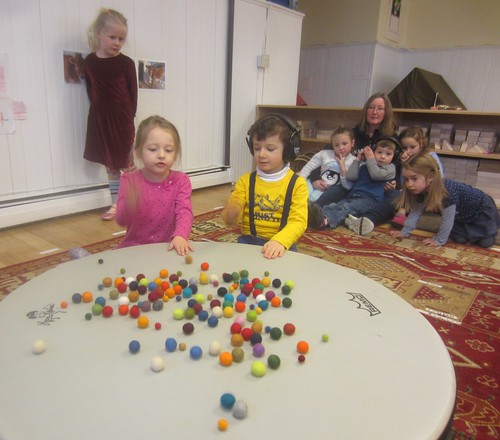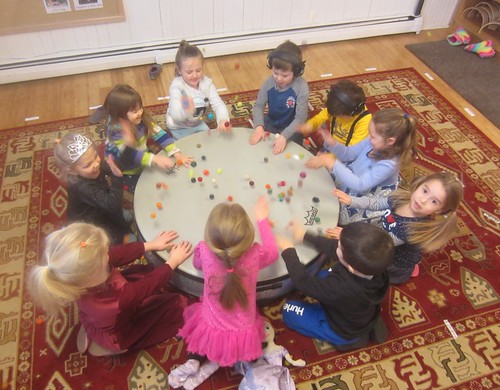The sleds were joined by a new friend this week, which made everyone so excited, so thank you to the anonymous sled donor! All the sleds were quite busy and put to good use. They pulled, pushed, carried, and carted snow, friends, vehicles, and ice. We tried to move around to stay warm on these cold winter days.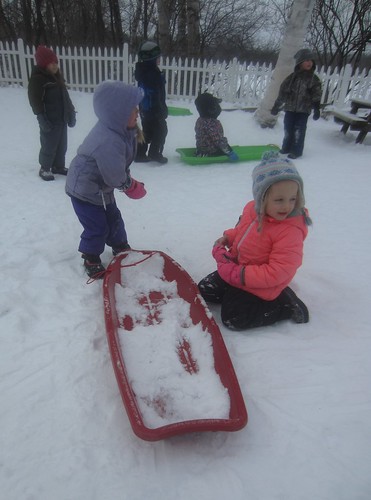
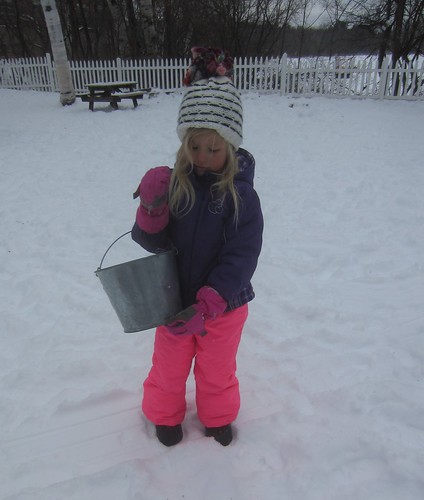
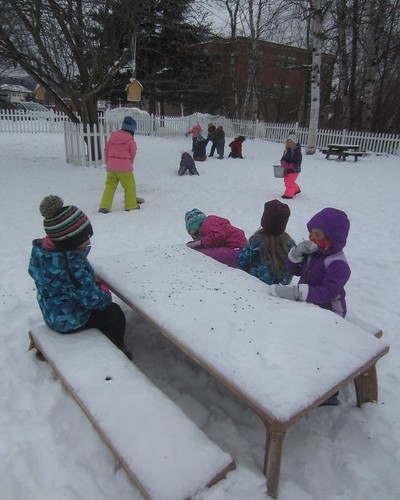

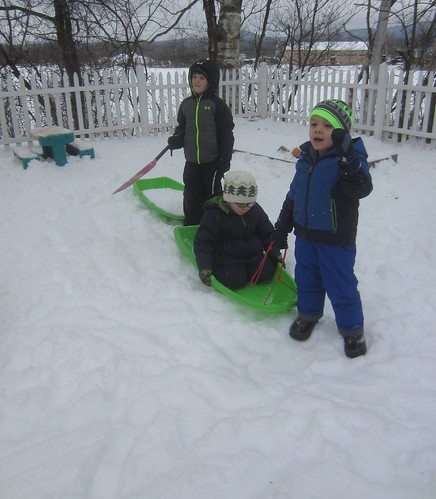
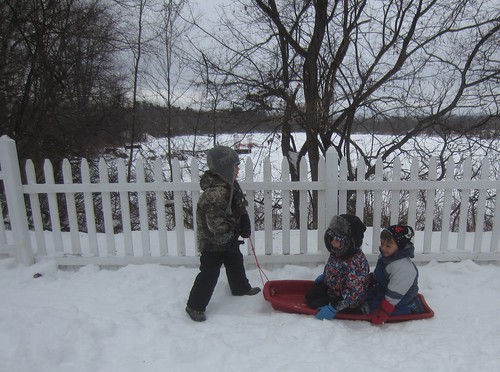
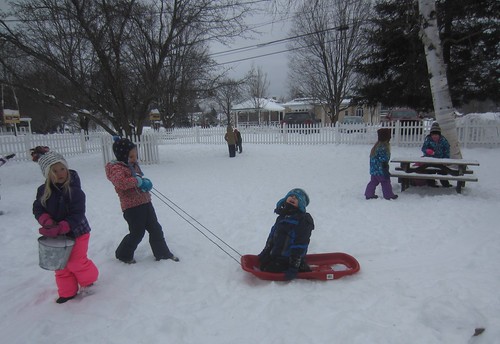

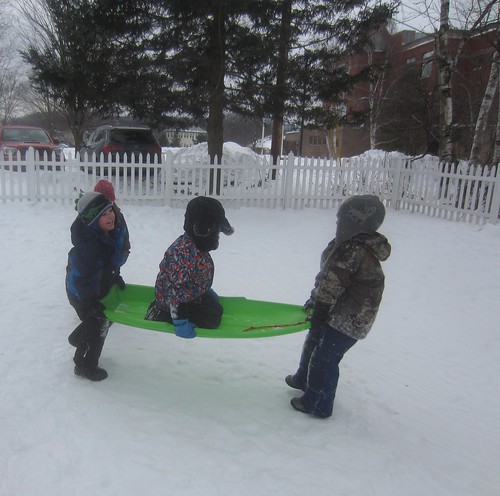 We spent a couple days inside with below 5ᵒ temperatures. We had fun with indoor activities that only come out on indoor recess days or during after care, so we were excited for the change. We had a lot of energy left over in the afternoons, though, so we played duck, duck, goose and long jump one day, and made an upside-down chair obstacle course to challenge our maneuvering skills another day.
We spent a couple days inside with below 5ᵒ temperatures. We had fun with indoor activities that only come out on indoor recess days or during after care, so we were excited for the change. We had a lot of energy left over in the afternoons, though, so we played duck, duck, goose and long jump one day, and made an upside-down chair obstacle course to challenge our maneuvering skills another day.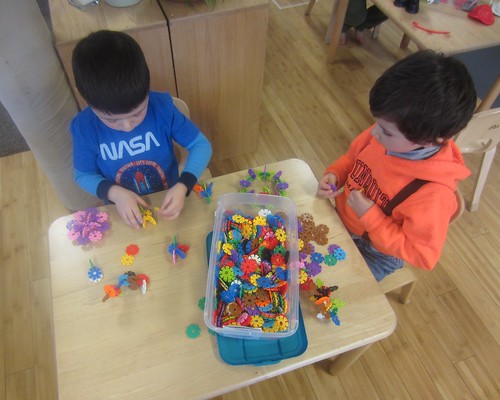
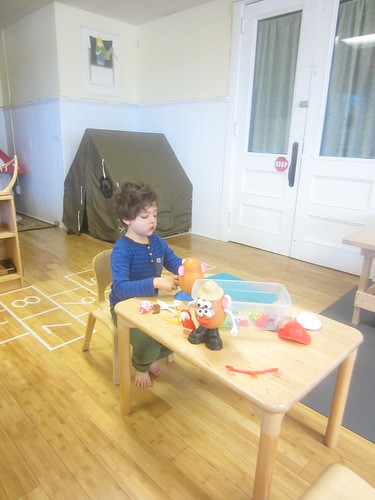
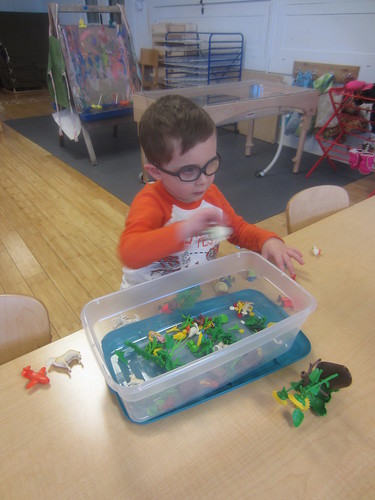
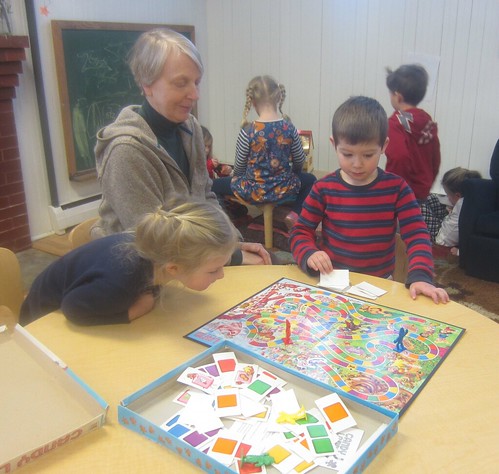
 Monday students used salt to create snowy pictures. First they drew a winter scene with pastels, then painted over it with watercolor paints. They then sprinkled salt over the watery paint, which pushed the paint out to create snowflakes in the sky.
Monday students used salt to create snowy pictures. First they drew a winter scene with pastels, then painted over it with watercolor paints. They then sprinkled salt over the watery paint, which pushed the paint out to create snowflakes in the sky.
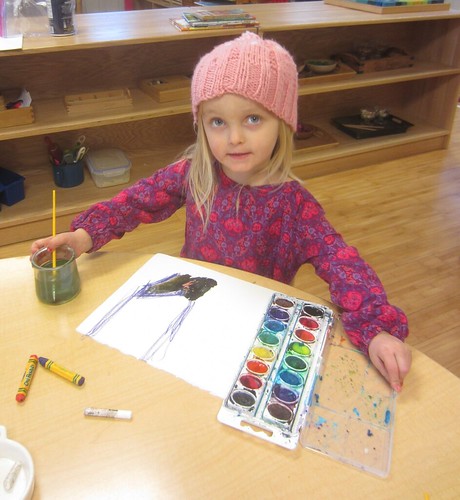
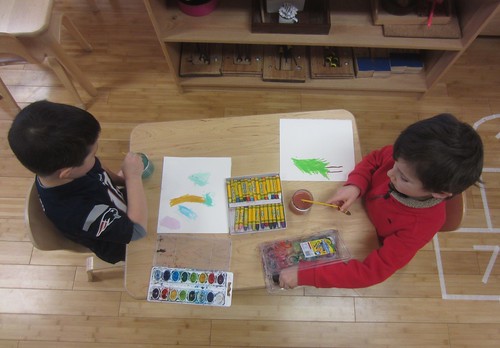
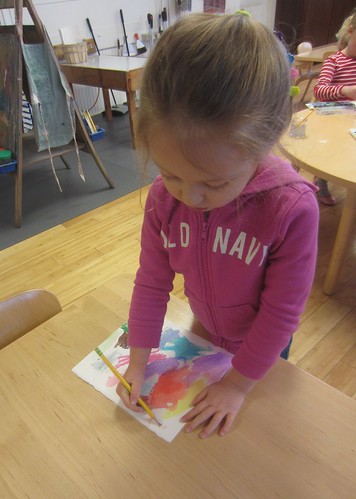
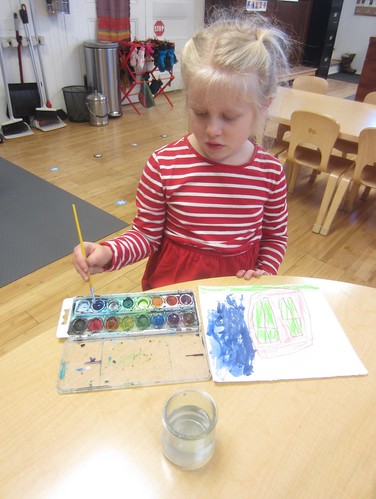 Susan returned this week and we were so happy to see her. She is such an integral part of our class and we missed her while she had to be away.
Susan returned this week and we were so happy to see her. She is such an integral part of our class and we missed her while she had to be away.
We covered some heavy topics this week, but the children dealt with them well. We observed them and listened to their comments and questions to be sure they felt positively about the information and powerful to take action toward positive change.
We continued to talk about plastics and sorting out waste that can be composted, burned, or recycled. We watched some moving videos about plastic pollution around the earth. We viewed a brief video of the Pasig River in Manilla, Philippines. The video shows a river full of trash running through the city. We discussed how fortunate we are to have trash collection and landfills where our trash can be taken so our rivers can stay clean and clear of waste. We discussed how all this trash flows down the river and into the ocean, where it is mistaken for food by sea birds and ocean animals. We then watched a video of a manta ray ingesting plastic, thinking it is food. We watched the beginning of a National Geographic video called How We Can Keep Plastic Out of Our Oceans. Finally, we watched a video about a landfill and how trash can be managed and recycled. We discussed, as pointed out in the two longer videos, that everyone has a role to play. Each of us in our classroom has a job, and our job is to pay attention to what we throw away and what we recycle and reuse. The BBC has an enlightening and heartbreaking video (which we did not show the children) about the impact of plastic pollution on the planet and how microplastics are infiltrating the environment and creating a serious health risk to animals and humans across the planet. I would highly encourage you to watch it. It can be accessed by clicking here: BBC Drowning in Plastic. We sorted through some of the waste we have collected and a couple children worked with Susan to create signs to hang over our waste area to indicate what can be recycled, burned, or composted, and what must go in the trash. There are items we are working on researching still, and we have been surprised by some of the things that we can recycle, including juice pouches. We will purchase a box from a company called Terracycle, where we can mail granola, chip, and energy bar wrappers to be recycled. We are determining what items can be burned in Lyn’s furnace and kept out of the landfill. And we are making sure all of our food waste goes into the compost instead of the trash.
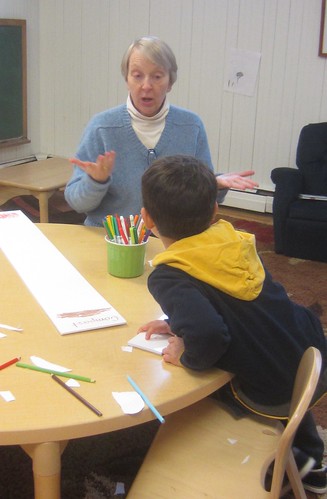
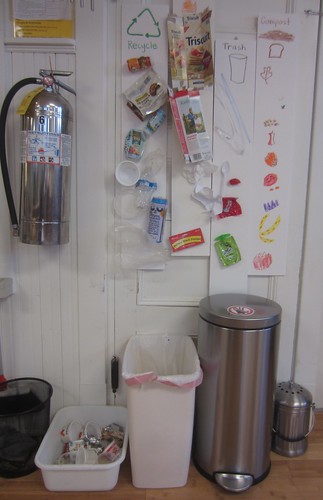
 Wednesday, the day after Martin Luther King Jr.’s birthday, we read and learned all about him. We started by reading and discussing My Brother Martin, written by his sister, Christine King Farris. We learned the terms segregation and discrimination and talked about unfair laws that prohibited people from doing things because of the color of their skin, such as sitting where they want on a bus, eating in certain restaurants, drinking out of some water fountains, and attending particular schools. We learned how Martin Luther King Jr. worked to change these laws and how this dream began as a child when his friends with white skin were no longer allowed to play with him. We learned that skin color is determined by how much melanin is in our skin, making it lighter or darker, and that the closer our ancestors lived to the equator, the darker their skin. We talked about kindness and equality and how all humans are the same because we all have feelings and thoughts and bodies, but we are also all different because we have different colored hair, eyes, and skin, and are different shapes and sizes and we have different feelings and thoughts about different things.
Wednesday, the day after Martin Luther King Jr.’s birthday, we read and learned all about him. We started by reading and discussing My Brother Martin, written by his sister, Christine King Farris. We learned the terms segregation and discrimination and talked about unfair laws that prohibited people from doing things because of the color of their skin, such as sitting where they want on a bus, eating in certain restaurants, drinking out of some water fountains, and attending particular schools. We learned how Martin Luther King Jr. worked to change these laws and how this dream began as a child when his friends with white skin were no longer allowed to play with him. We learned that skin color is determined by how much melanin is in our skin, making it lighter or darker, and that the closer our ancestors lived to the equator, the darker their skin. We talked about kindness and equality and how all humans are the same because we all have feelings and thoughts and bodies, but we are also all different because we have different colored hair, eyes, and skin, and are different shapes and sizes and we have different feelings and thoughts about different things.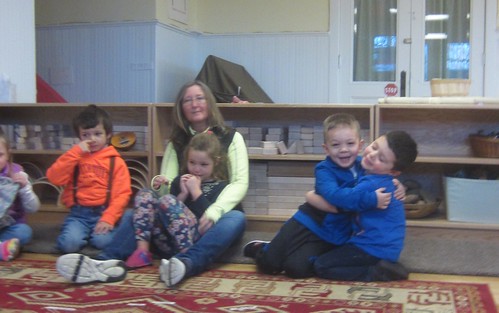
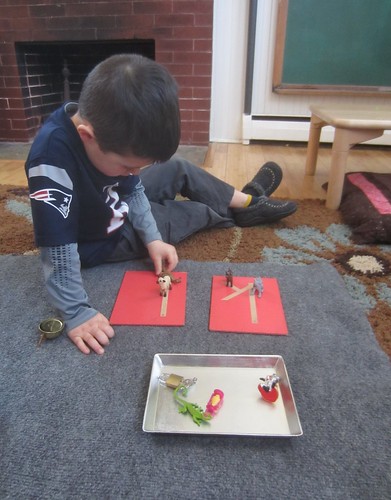
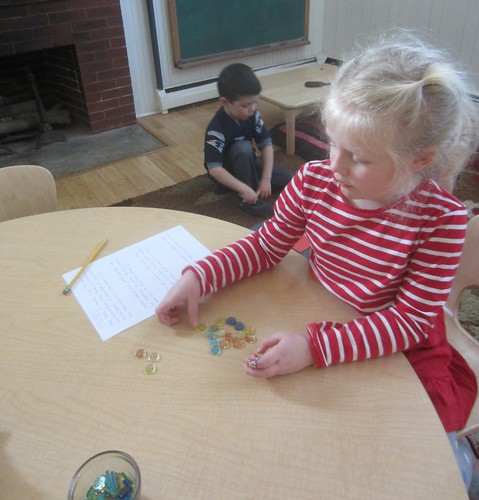
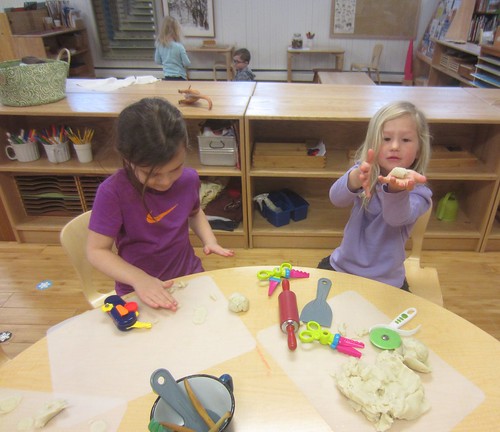
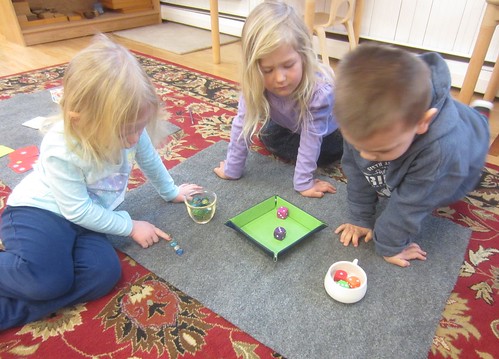


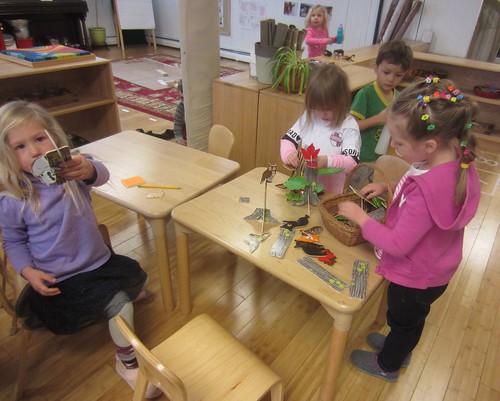
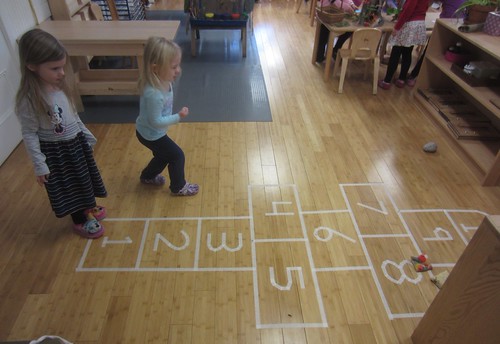
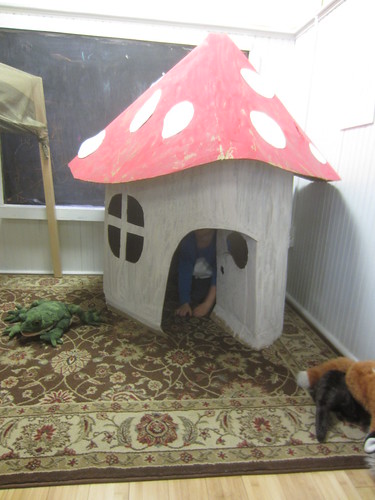


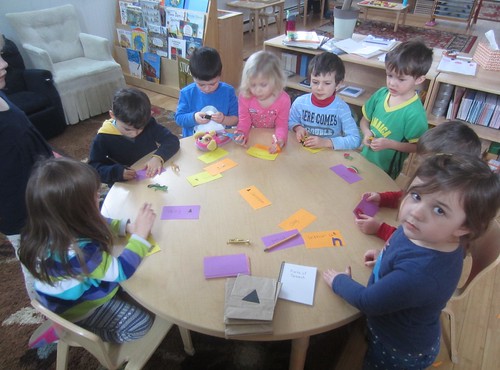
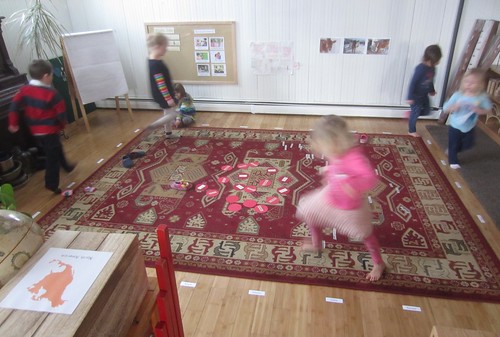

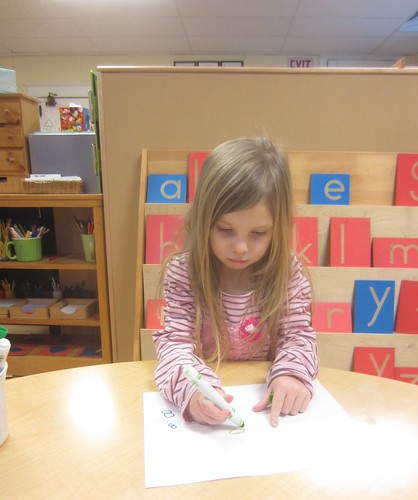
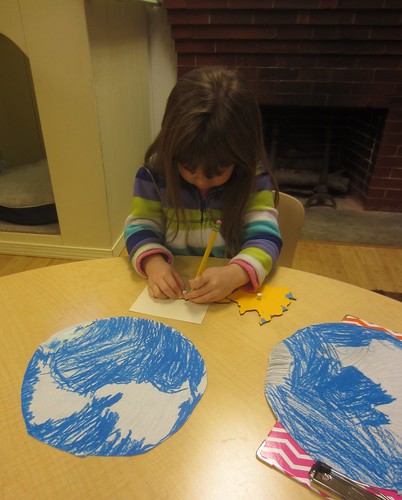

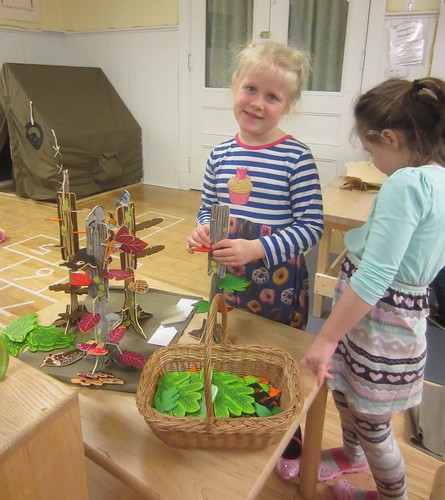
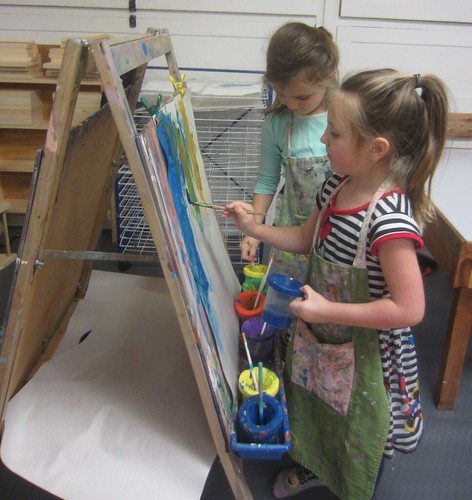
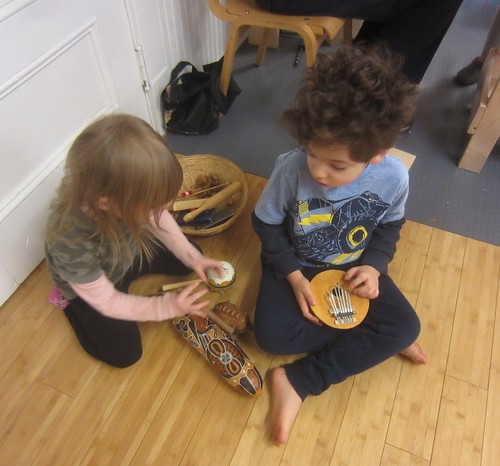
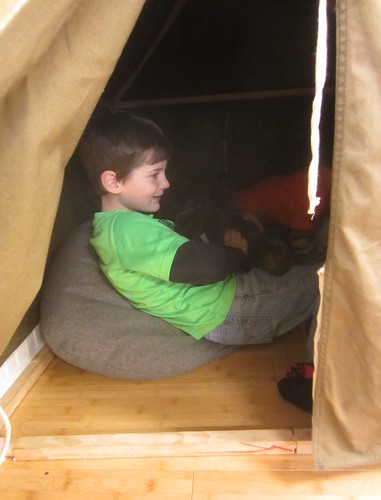


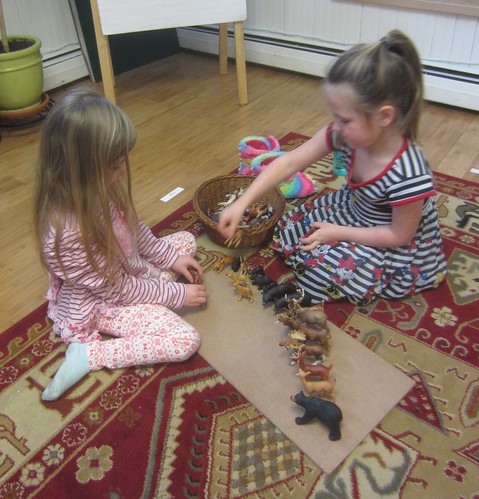


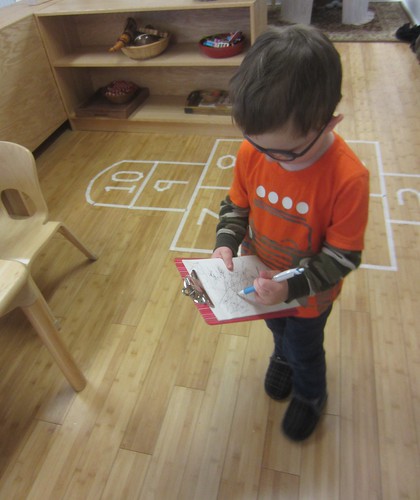
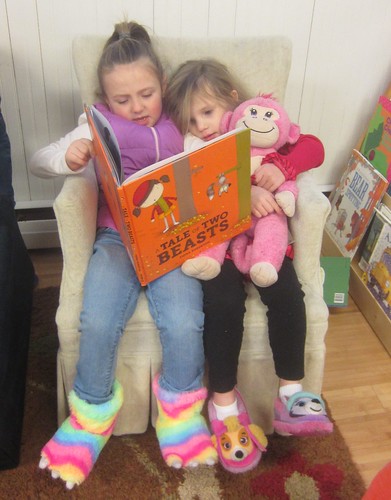


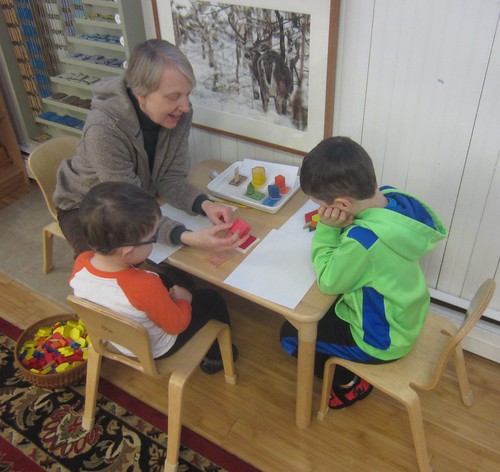

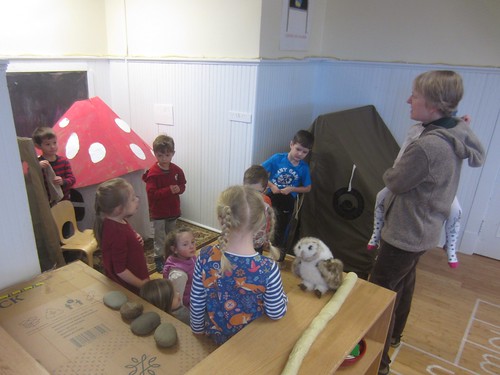
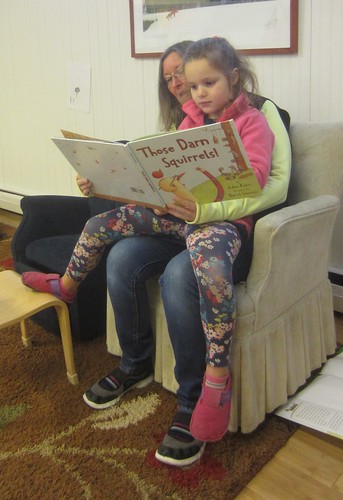



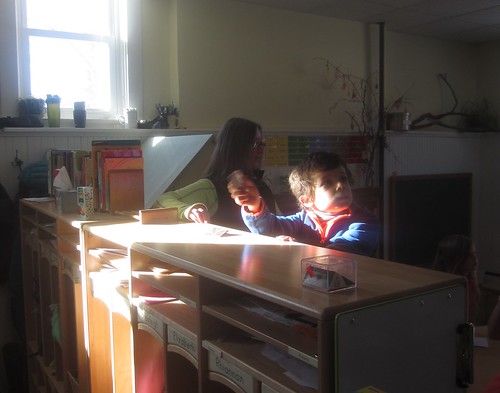

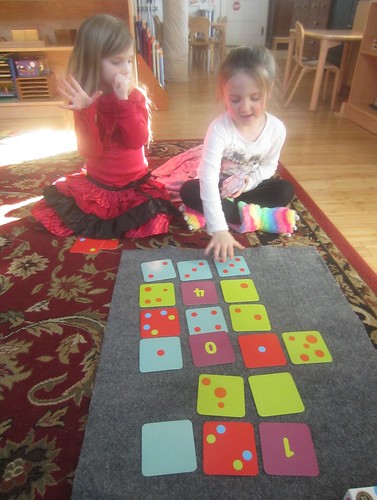
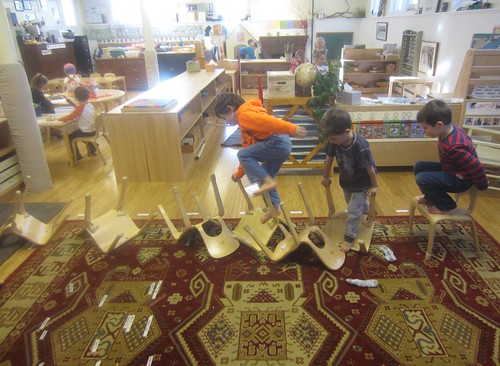
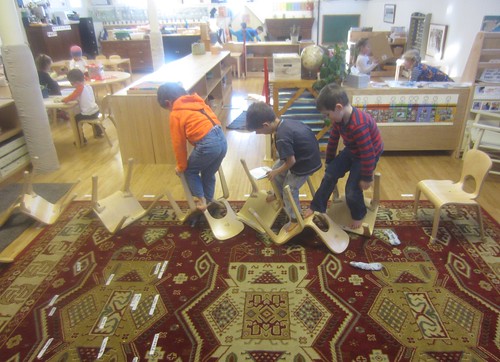
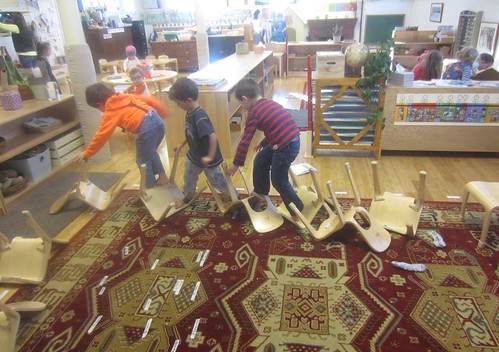
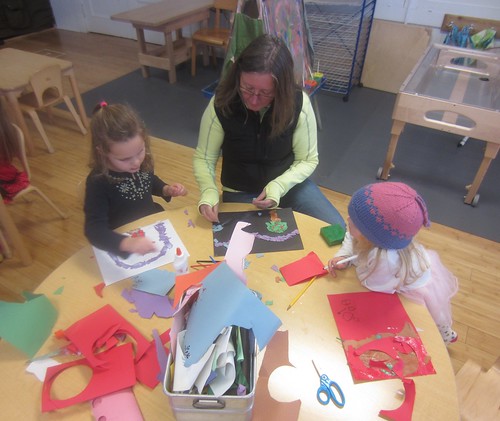
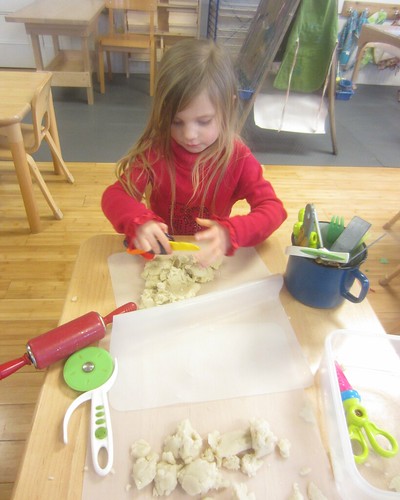
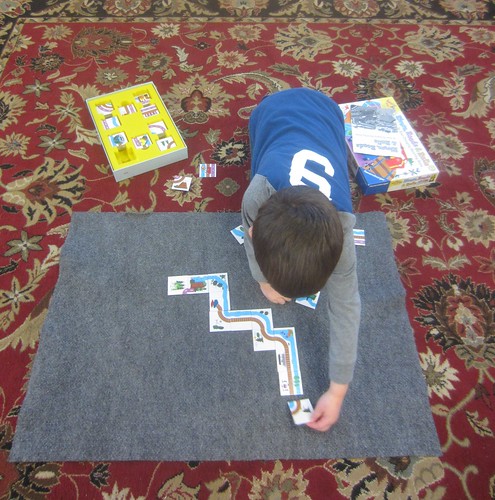
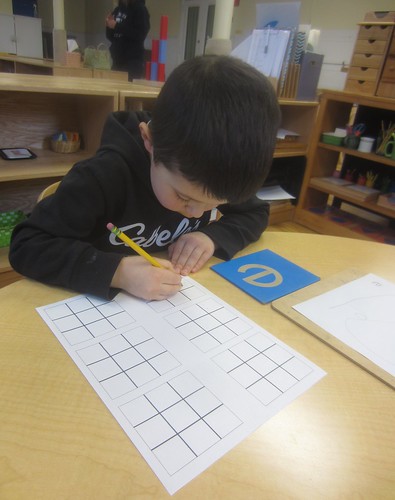

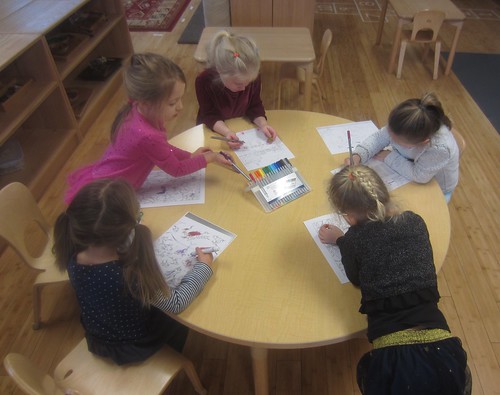
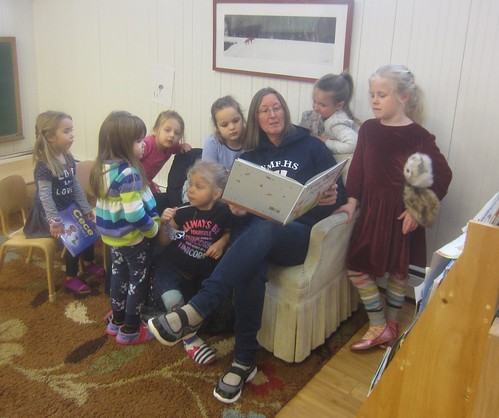 Mr. Bond worked with the children to attach the bottom of their tool boxes to the first side. They opened the clamp, then secured the side, before attaching the bottom. Each child hammered in three nails, starting with one in the middle, then the two on the ends. As always, thank you so much to Mr. Bond who so generously volunteers his time, skills, and resources!
Mr. Bond worked with the children to attach the bottom of their tool boxes to the first side. They opened the clamp, then secured the side, before attaching the bottom. Each child hammered in three nails, starting with one in the middle, then the two on the ends. As always, thank you so much to Mr. Bond who so generously volunteers his time, skills, and resources!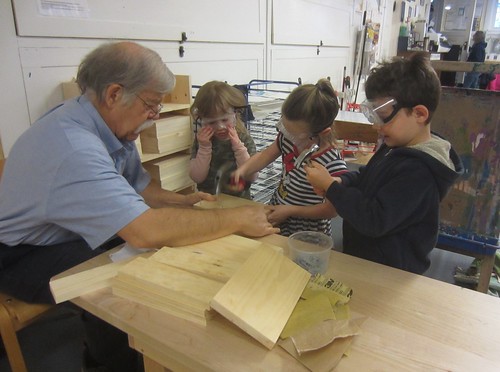
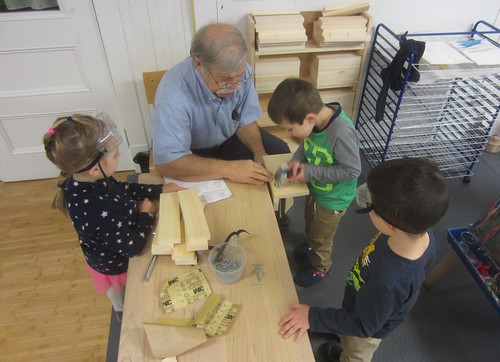
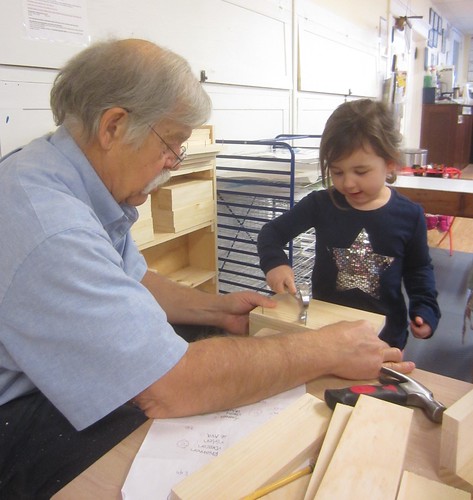
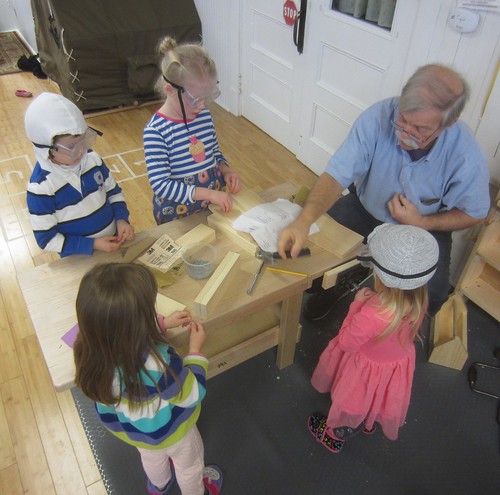
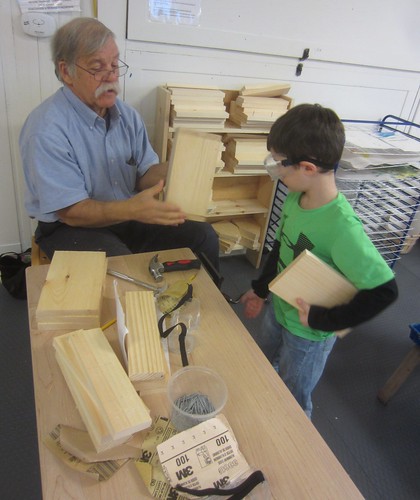 We talked about our community and Susan taught us several songs about community workers, community, and friends. We discussed what we might see on our walk around town (which we are hoping to do on Tuesday, weather permitting). The children named several buildings that we would need to spot and include on our community map, including the library, post office, and bank.
We talked about our community and Susan taught us several songs about community workers, community, and friends. We discussed what we might see on our walk around town (which we are hoping to do on Tuesday, weather permitting). The children named several buildings that we would need to spot and include on our community map, including the library, post office, and bank.
We put out washing bins for the children to wash out all the recyclables. They enjoyed scrubbing them and rinsing them clean, then putting them in a bin to dry.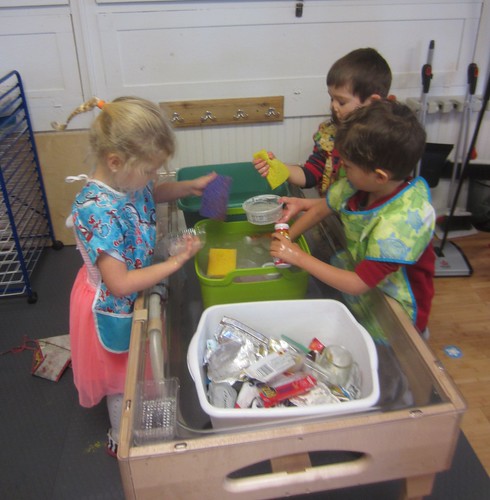
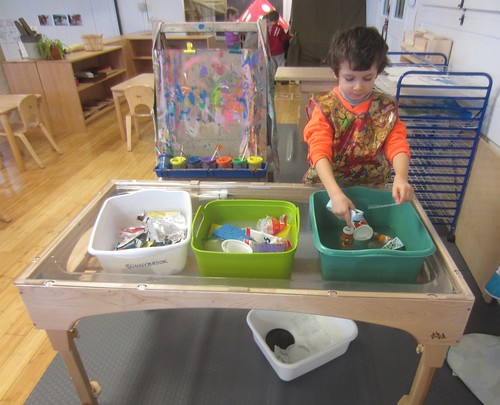 Thursday during group gathering we sorted through and charted what we had collected in our recycling bin. We took out our trash bag for the week and observed that with our sorting of waste, making sure as many burnable, compostable, and recyclable items were kept out of the trash as possible, we made less than ½ bag of trash in a week. We discussed how much of what ended up in the trash could have gone in other bins, so we will be more careful in the future about where we put our waste in an effort to recycle, compost, and keep as much as possible out of the landfill. We sorted, counted, and charted our recyclables. We found that granola bar wrappers and yogurt lids and containers were the highest numbers, at about 14 each.
Thursday during group gathering we sorted through and charted what we had collected in our recycling bin. We took out our trash bag for the week and observed that with our sorting of waste, making sure as many burnable, compostable, and recyclable items were kept out of the trash as possible, we made less than ½ bag of trash in a week. We discussed how much of what ended up in the trash could have gone in other bins, so we will be more careful in the future about where we put our waste in an effort to recycle, compost, and keep as much as possible out of the landfill. We sorted, counted, and charted our recyclables. We found that granola bar wrappers and yogurt lids and containers were the highest numbers, at about 14 each.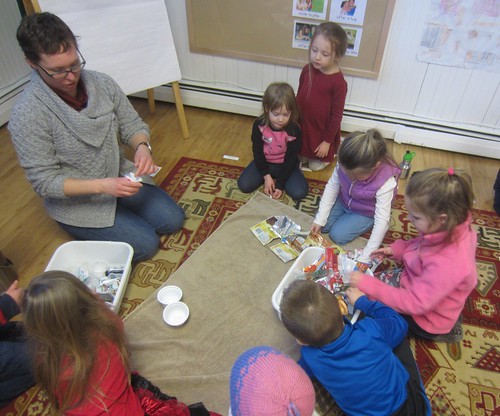
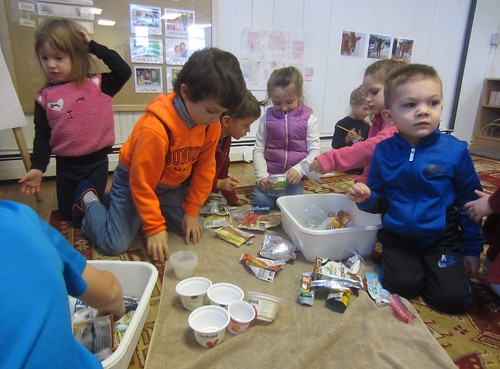 The children had fun taking turns performing the story of Tacky the Penguin with flannel characters.
The children had fun taking turns performing the story of Tacky the Penguin with flannel characters.
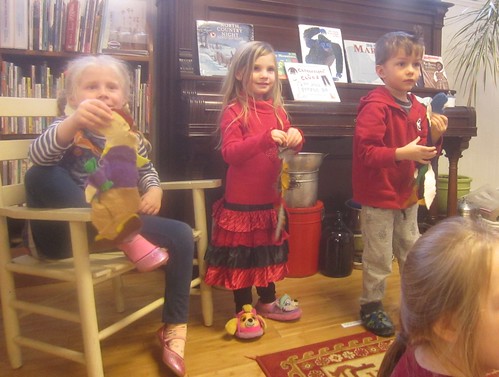


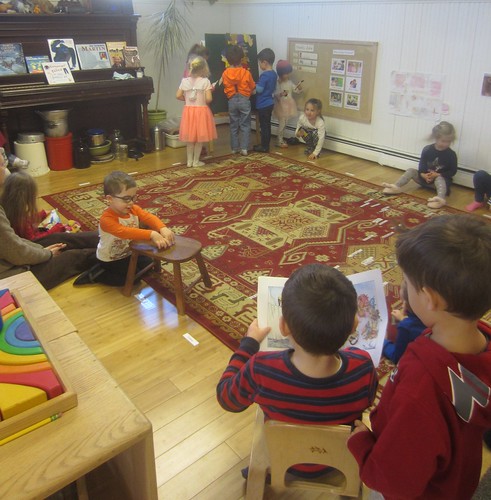 Friday students continued their study of the 5 senses. This week we focused on the sense of hearing. We listened to some animal sounds and identified them. Some were very easy, but a couple were quite hard. We watched a video about how the ear works, stopping to discuss and expound on what was said. We also watched a video about sound waves and how different frequencies make different patterns. Some of them were very cool, and the children started moving to the music as it played. We read a book about sound and how it works, then we listened as lyn moved various items and tried to identify them. Some were very challenging, and some we got right away, such as a jar being opened, a brush sweeping, a box of crackers being opened, and tape being pulled off a dispenser. Finally we took out the big drum with the felt balls and vibrated them right off as we played different drumming patterns and played slowly then quickly.
Friday students continued their study of the 5 senses. This week we focused on the sense of hearing. We listened to some animal sounds and identified them. Some were very easy, but a couple were quite hard. We watched a video about how the ear works, stopping to discuss and expound on what was said. We also watched a video about sound waves and how different frequencies make different patterns. Some of them were very cool, and the children started moving to the music as it played. We read a book about sound and how it works, then we listened as lyn moved various items and tried to identify them. Some were very challenging, and some we got right away, such as a jar being opened, a brush sweeping, a box of crackers being opened, and tape being pulled off a dispenser. Finally we took out the big drum with the felt balls and vibrated them right off as we played different drumming patterns and played slowly then quickly.